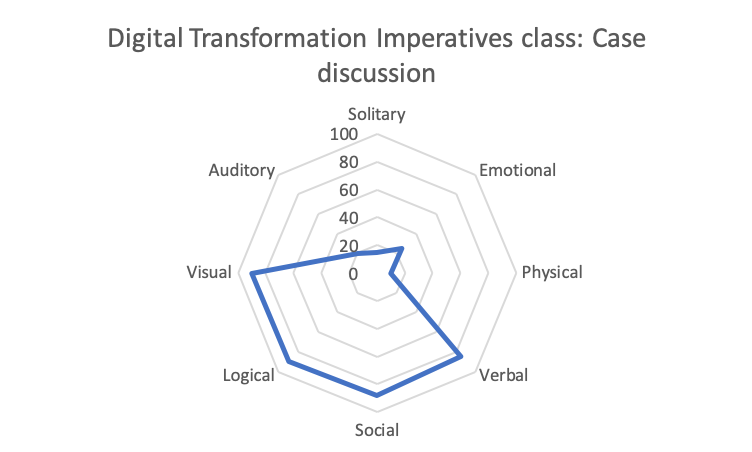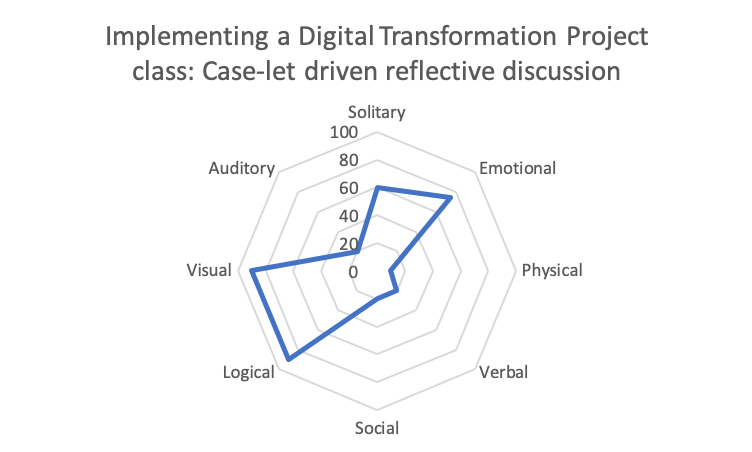It is interesting how much management as a discipline borrows from other disciplines. Much like the English language. That is for another day. Today, working from home, I got reading a lot of marine biology. Yes, you heard it right, marine biology. It is about Remora fish, and its relationship with sharks and other larger marine animals. Students in my IIMB MBA class of 2020 have heard of it in one of my sessions in the platform business course and a couple of groups also used this concept in their live projects.
What is a Remora and what is its relationship with Sharks?
The Remora is a fish. It is possibly the world’s best hitchhiker. It has an organ that allows it to attach itself to a larger animal, like a shark or a whale. The sucker-like organ is a flat surface on its back, that allows itself to attach to the belly of a shark. That is a reason why it is also popularly known as a sharksucker or whalesucker. Remoras have also been known to attach themselves to divers and snorkelers as well. The sucker organ looks like venetian blinds that increase or decrease its suction on the larger fish’s body as it slides backward or forward. They could therefore be removed by sliding them forward.

Remoras can swim on their own. They are perfectly capable. But they prefer to attach themselves to the larger fish to hitch a ride to deeper parts of the ocean, saving precious energy. Their relationship with the Shark is unique – they do not draw blood or nutrients from the Shark like a Leech. They feed on the food scraps of the larger fish by keeping their mouths open. While the Remora benefits from its attaching to the Shark, it does not significantly benefit or harm the Shark. Some scientists argue that Sharks like the fact that Remoras feed on the parasites that are attaching themselves to the skin of the Shark and thereby keeping them healthy. Some others are concerned about the drag experienced by Sharks as they swim deeper in the oceans, which can be significant when there are dozens of Remoras attached to the Shark. Both of these are not that significant enough for the Sharks to either welcome Remoras to attach themselves to their bellies, nor have they exhibited any behaviour to repel these Remoras away (like they do with other parasites). Read more about Remoras’ relationship with Sharks here.
This relationship between the Remora and the shark can be termed as commensalism, rather than symbiotic. If the Sharks indeed value the fact that Remoras can help them get rid of the parasites from their teeth or skin, then we could term this relationship as mutualistic.
Remoras and platform start-ups
What is a platform researcher studying Remoras? A platform start-up could solve its Penguin problem using a Remora strategy. It could piggy-back on a larger platform to access its initial set of users, with no costs to the larger platform. Let’s consider an example. A dating start-up struggles to get its first set of users. While it needs rapid growth of numbers, it should ensure that the profiles on the platform are of good quality (bots, anyone?). It has two options: developing its own validation algorithm or integrating with larger platforms like Twitter or Facebook for profile validation. It could create its own algorithms if it needs to validate specific criteria, though. It could use a Remora strategy, by attaching itself to a larger Shark in the form of Twitter or Facebook. This has no costs to Twitter or Facebook, and if at all, contributes to marginal addition of traffic to Facebook/ Twitter. However, for the start-up, this saves significant costs of swimming down the depths of the ocean (developing and testing its own user validation algorithms).
Remora’s choice
Don Dodge first wrote about the Remora Business Model, where he wondered how both the Remoras and the Sharks made money, if at all. Building on this, Joni Salminen elaborated on Remora’s curse. Joni’s dissertation elaborates two dilemmas multi-sided platforms face – cold-start and lonely-user.
The cold-start dilemma occurs when a platform dependent on user-generated content does not get sufficient enough content in the early days to attract more users (to consume and/ or generate content). There are two issues to be resolved in this case – to attract more users to sustain the platform, and in the process balancing the numbers of content generators and content consumers.
The lonely-user dilemma occurs when a platform dependent on cross- and same-side network effects tries to attract the first users. A subset of the penguin problem, on this platform nobody joins unless everybody joins. There is no intrinsic value being provided by the platform, except that being generated by interactions between and among user groups.
The cold-start dilemma can be typically resolved using intelligent pricing mechanisms, like subsidies for early adopters. For example, a blogging platform can attract influencers to start blogging on their site, by providing them with premium services. As they resolve the cold-start dilemma, and they attract enough users to blog and read (generate and consume), they could get to a freemium model (monetize reading more than a specified number of posts), while continuing to subsidising writers. The key is to identify after what number of posts, does one start charging readers, as too low a number would reduce the number of readers and high-quality writers would leave the platform; but on the other hand, too big a number of freely available posts to read, the platform may not make any money at all to sustain.
The lonely-user dilemma can be typically resolved by following a Remora strategy. By leveraging the users on a larger established platform, the first set of users could be sourced easily en masse. However, just having users is not sufficient – there is an issue of coordination: getting not just sign-ups but driving engagement. It is important that registered users begin engaging with the platform. Some platforms need more than just engagement, they are stuck with a real-time problem: like in a multi-player gaming or a food-delivery platform, we need gamers to be engaged with each other real-time. Some other platforms need users in specific segments, or the transferability problem: that users are looking for others within a specific segment, like in a hyperlocal delivery platform, a matrimony platform or a doctor-finding platform. Such platforms need to have sufficient users in each of these micro-segments.
A Remora strategy could potentially help a platform start-up overcome these two major dilemmas – cold-start and lonely-user. By porting users from the larger platform, one could solve the lonely-user problem, and through tight integration with the content/ algorithms of the Shark platform, the Remora (start-up) could manage the cold-start problem.
Remora’s curse
The decision to adopt a Remora strategy is not just simple for a platform start-up. There may be significant costs in the form of trade-offs. I could think of five significant costs that need to be considered along with the benefits of following a Remora strategy. These costs include (a) holdup risk; (b) ceding monetization control; (c) access to user data; (d) risk of brand commoditization; and (e) exit costs.
Hold-up risk: There is a significant risk of the established platform holding the start-up to a ransom, partly arising out of the start-up making significant asset-specific investments to integrate. For instance, the dating start-up would need to tightly integrate its user validation processes with that of Facebook or Twitter, as the need may be. It may have to live with the kind of data Facebook provides it through its APIs. It may be prone to opportunistic behaviour by Facebook, when it decides to change certain parameters. For example, Facebook may stop collecting marital status on its platform, which may be a key data point for the dating start-up. Another instance of hold-up risk could be when Google resets its search algorithm to only include local search, rather than global search, thereby affecting start-ups integrating with Google.
In order to manage hold-up risks, Remora start-ups will be better off not making asset-specific investments to integrate with the Shark platforms.
Monetization control: A significant risk faced by Remora start-ups is that of conceding the power to monetize to the Shark. For example, when a hyper-local restaurant discovery start-up follows a Remora strategy on Google, it is possible that Google gets all the high-value advertisements, leaving the discovery start-up with only low-value local advertisements. There is also a risk of the larger platform defining what could be monetised on the start-up platform as well. For example, given that users have gotten used to search for free, even specialised search like locations (on maps) or specialised services like emergency veterinary care during off-working hours, may not be easy to monetise. Such platforms may have to cede control on which side to monetise and subsidise, and how much to price to the larger platform.
To avoid conceding monetization control to larger platforms, Remora start-ups need to provide additional value over and above the larger platform. For instance, in the local search business, a platform start-up would possibly need to not just provide discovery value (which may not be monetizable) but include matching value as well.
Access to user data: This is, in my opinion, the biggest risk of following a Remora strategy. Given that user data is the primary lever around which digital businesses customize and personalize their services and products, it is imperative that the start-up has access to its user data. It is likely that the larger platform may restrict access to specific user data, which may be very valuable to the start-up. For instance, restaurant chains who could have run their own loyalty programmes for its clients, may adopt a Remora on top of food delivery platforms like Swiggy or Zomato. When they do that, the larger platform may run a loyalty programme to its clients, based on the data it has about the specific user, which is qualitatively superior to the one that local restaurants may have. In fact, in the context of India, these delivery platforms do not even pass on basic user profiles like demographics or addresses to the restaurants. The restaurants are left with their limited understanding of their walk-in customers and a set of nameless/ faceless customers in the form of a platform user, for whom they can generate no meaningful insights or even consumption patterns.
It is imperative that platform start-ups define what data they require to run their business model meaningfully, including user data or even operations. It could be in the form of specific contracts for accessing data and insights, and/ or co-creating analytical models.
Risk of brand commoditization: A direct corollary of the user data is that the Remora start-up could be commoditized, and their brand value might be subservient to the larger platform’s brand. It could end up being a sub-brand of the larger start-up. For user generation and network mobilization, the Remora start-up would possibly need to get all its potential users to affiliate with the larger platform, even if may not be most desirable one. On a delivery start-up, hungry patrons may be loyal to the aggregator and the specific cuisine, rather than to a restaurant. Given that patrons could split their orders across multiple restaurants, it could be the quality and speed of delivery that matters more than other parameters. Restaurants might then degenerate into mere “kitchens” that have excess capacity, and when there is no such excess capacity, these aggregators have known to set up “while label” or “cloud kitchens”.
It is important that Remora start-ups step up their branding efforts and ensure that the larger brand does not overshadow their brand. The standard arguments or relative brand strengths of complements in user affiliation decisions need to be taken into consideration while protecting the Remora’s brands.
Exit costs: The last of the Remora’s costs is that of exit costs. Pretty much similar to the exit costs from an industry, platform start-ups need to be clear if their Remora strategy is something temporary for building up their user base and mobilizing their networks in the early stages, or it would be relatively permanent. In some cases, the platform’s core processes might be integrated with the larger platform, like the API integration for user validation, and therefore may provide significant exit costs. In some other cases, the platform may have focused on their core aspects of their business during the initial years and would have relegated their non-core but critical activities to the larger platform. At a time when the start-up is ready to exit the larger platform, it may require large investments in non-core activities, which may lead to disruptions and costs. Add to this, the costs of repurposing/ rebuilding asset-specific investments made when joining the platform.
Remora start-ups, therefore, need to have a clear strategy on what is the tenure of these Remora strategies, and at what point of time they would exit the association with the larger platform, including being prepared for the costs of exit.
Scaling at speed
Remora strategies allow for platform start-ups an alternative to scale their businesses very fast. However, it is imperative to understand the benefits and costs of such strategies and make conscious choices. These choices are at three levels – timing of Remora, what processes to Remora, and building the flexibility to exit. Some platforms may need to attach themselves right at the beginning of their inception to larger platforms to even get started; but some others can afford to wait for the first users to start engaging with the platform before integrating. What processes to integrate with the larger platform is another critical choice – much like an outsourcing decision, core and critical processes need to be owned by the start-up, while non-core non-critical processes may surely be kept out of the platform. In all of these decisions, platform start-ups need to consciously decide the tenure and extent of integration with the larger platform, and therefore make appropriate asset-specific investments.
Maintain social distance, leverage technology, and stay healthy!
Quote of the times
(C) 2020. Srinivasan R














